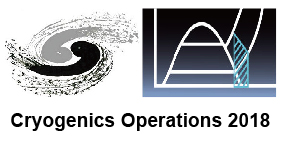Speaker
Mr
Jae Joon Joo
(NFRI)
Description
The Helium Refrigeration System (HRS) of Korea Superconducting Tokamak Advanced Research (KSTAR) has been successfully operating since 2008. The KSTAR HRS is the complex system that equipscontains various components such as rotating machines, sensors, heat exchangers, valves, and so forth.etc Meanwhile, tThere have beenwere several abnormal events due to the component failures, abnormal pressure variations on the supercritical helium (SHe) circuits, control system faults, black out, and so on. Among them, the turbine that most important key component was shut down due to a fault in the temperature sensor. In addition, pressure and flow fluctuations occurred in PF [Poloidal Field] coil and TF [Toroidal Field] coil circuit. We have been successful in solving related problems in an effective way. This Poster will present describe the modification of the KSTAR 9kW HRS.
Summary
- The KSTAR HRS is the complex system that equipscontains various components such as rotating machines, sensors, heat exchangers, valves, and so forth.
- The turbine that most important key component was shut down due to a fault in the temperature sensor
- Due to frequent failure of the thermal well type temperature sensor, the specification of the sensor was changed and used as the redundancy sensor to obtain stable results
- The pressure fluctuations shortened the life span of HRS equipment and had an adverse effect on the KSTAR experiment.
- Through the analysis of the temperature and pressure of each circuit, the heat penetration inside the circuit was traced to remove the related elements, and the pressure fluctuation phenomenon disappeared.
- In this way, the problems that occur in various equipment are corrected and the equipment are operated stably.
Primary author
Mr
Jae Joon Joo
(NFRI)
Co-authors
Mr
Dong-seung Park
(National Fusion Research Institute)
Mr
Kyung Mo Moon
(National Fusion Research Institute)
Mr
Nak Hyung Song
(National Fusion Research Institute)
Mr
Nam Won Kim
(National Fusion Research Institute)
Mr
Sang Woo Kwag
(National Fusion Research Institute)
Mr
Seok Ho Hong
(National Fusion Research Institute)
Mr
Yang Soo Kim
(National Fusion Research Institute)
Mr
Yong Bok Chang
(National Fusion Research Institute)
Mr
Yong Ju Lee
(National Fusion Research Institute)

